|
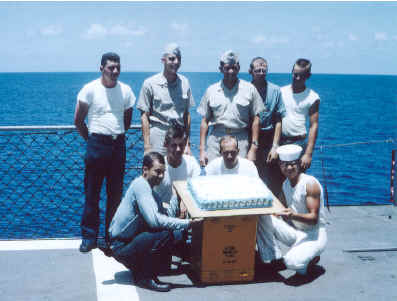 |
Over the last year, many U.S. Naval Personnel have
written to the Gyrodyne Helicopter Historical
Foundation, submitting
quite a few stories of their DASH experiences; some funny and some not. If
you have a story, please submit pictures with it, as well as your name,
ship name and date of experience. We'll try to post those stories as they
come in. Thanks for your help!
|
|
The Crew of the USS Anderson (DD-786) enjoy the
traditional cake (above) following the 100th landing of their QH-50C DASH
on-board (seen right).
Taken in the Gulf of Tonkin, August 1964 |
 |

How former CNO Admiral Arleigh A. Burke USN, came to visit the U.S.S.
Anderson (DD-786) on Labor Day Weekend, 1962. By VADM Emmett Tidd
USN (Ret).
|
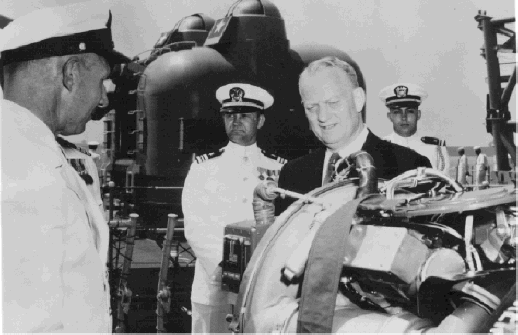 " The Admiral was aboard, having accepted my invitation. When I
informed the ComCruDesPac staff a few days before the visit, that he would
be coming aboard, they were in a snit about my going over their heads with
such an invitation. I explained (to little avail) that the invitation had
been extended before I detached from OpNav, after a tour working under
Admiral Burke while he was still CNO, and I was way down the ladder in his
Strategic Plans Division, but briefed him frequently on force level
objective plans. He had been retired only a very few months before that
visit, but had frequently expressed a continuing interest in
"HIS" FRAM I & II conversions, and the DASH and ASROC
programs. When I received my orders to RBA (Naval Destroyer Richard B.
Anderson), still in conversion at Bremerton, I mentioned it in a call on
him. He urged me to keep him informed when we would be back in commission
and available for a visit.
" The Admiral was aboard, having accepted my invitation. When I
informed the ComCruDesPac staff a few days before the visit, that he would
be coming aboard, they were in a snit about my going over their heads with
such an invitation. I explained (to little avail) that the invitation had
been extended before I detached from OpNav, after a tour working under
Admiral Burke while he was still CNO, and I was way down the ladder in his
Strategic Plans Division, but briefed him frequently on force level
objective plans. He had been retired only a very few months before that
visit, but had frequently expressed a continuing interest in
"HIS" FRAM I & II conversions, and the DASH and ASROC
programs. When I received my orders to RBA (Naval Destroyer Richard B.
Anderson), still in conversion at Bremerton, I mentioned it in a call on
him. He urged me to keep him informed when we would be back in commission
and available for a visit.
After RBA's shakedown and
refresher training and other operations, when I was notified of dates that
we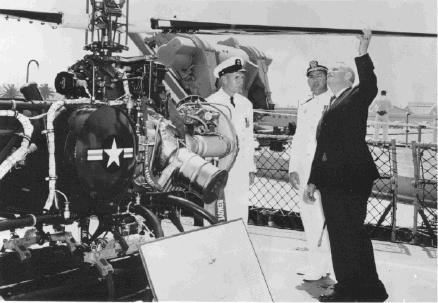 would be one of
the Open House ships for visitation, I also heard that Admiral Burke was
to be in town during that period. I quickly sent off an invitation to the
Admiral. I also asked the wardroom and Chief Petty Officers to brainstorm
what we could do to make our Open House something special. They must have
been getting used to such requests from me by then, for almost immediately
the Sonar and ASW gang came up with ideas. One of the best came from Chief
White and possibly Chief Sonarman Zech. They had contacted an old shipmate
on the DASH project to get us a prototype DASH on board. I don't know in
pounds of coffee just how much it must have cost us, trading with those
poor deprived shore based technicians. No ship in San Diego at that time
could boast of having had a DASH on board. But, as we tied up at Broadway
Pier, there was a crane standing by to load one on board RBA! (The crane
was also probably needed to off load from RBA their pallet of coffee!) would be one of
the Open House ships for visitation, I also heard that Admiral Burke was
to be in town during that period. I quickly sent off an invitation to the
Admiral. I also asked the wardroom and Chief Petty Officers to brainstorm
what we could do to make our Open House something special. They must have
been getting used to such requests from me by then, for almost immediately
the Sonar and ASW gang came up with ideas. One of the best came from Chief
White and possibly Chief Sonarman Zech. They had contacted an old shipmate
on the DASH project to get us a prototype DASH on board. I don't know in
pounds of coffee just how much it must have cost us, trading with those
poor deprived shore based technicians. No ship in San Diego at that time
could boast of having had a DASH on board. But, as we tied up at Broadway
Pier, there was a crane standing by to load one on board RBA! (The crane
was also probably needed to off load from RBA their pallet of coffee!)
Of course, it was a
minor matter that we had not been certified to operate a DASH, much less
that we also lacked having the instrumentation required for such
operation. But, we weren't saying it was "operational" -- just
that it was the first FRAM-I to have a DASH "on board"! OK?
A few days earlier I received the visit acceptance from Admiral Burke, and
on the same day I received a verbal reprimand that (I was told) came from
the ComCruDesPac Chief of Staff, when he had been advised by Admiral Burke
that he wanted to visit (specifically) RBA during his coming visit with
Rear Admiral Virden, then ComCruDesPac. Of course, as soon as I received
Admiral Burke's acceptance, I also invited everyone up my chain of
command. My Squadron and Flotilla commanders took it in stride, and seemed
pleased that we could show Admiral Burke examples of what he had
personally worked so hard to get into the fleet. That was the same
frequency that I was on. But, as Admiral Ike Kidd used to say, "My
Ox was already in the ditch." As far as the CCDP Chief of Staff
was concerned, Emmett Tidd had fouled up their whole visit schedule.
Later, in private, I apologized to Admiral Burke, hoping I had not
embarrassed him with complicating his ComCruDesPac visit.
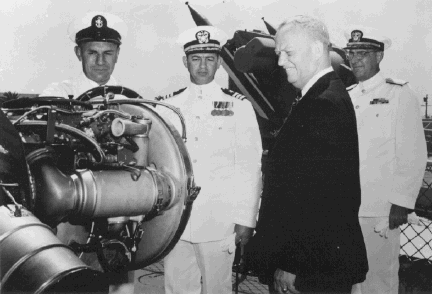 He roared with
laughter, and said, he always expected his destroyer skippers to get bumps
on more than just their shins -- that a skipper doing something for his
crew sometimes resulted in getting a thump on the head, but that was not
all bad. And I did survive, after all ! He roared with
laughter, and said, he always expected his destroyer skippers to get bumps
on more than just their shins -- that a skipper doing something for his
crew sometimes resulted in getting a thump on the head, but that was not
all bad. And I did survive, after all !
To have been associated with Admirals Burke and Wendt, was a grand treat
for me, and for our crew. But, serving with my RBA crew was every bit as
grand, and an honor. They were worth all the bumps I could possibly garner
on my head."
Former 3-Term Chief of Naval
Operations, Admiral Arleigh A. Burke (in suit) aboard the Navy destroyer
U.S.S. Anderson (DD-786) at San Diego, California, upon the introduction
of the DASH Weapon System to the Pacific Fleet and celebrating the
Sixtieth Anniversary of Destroyers in the U.S. Navy; Labor Day Weekend,
1962. Pictured with the Admiral (both photo's),
from left, CPO White, NAMTG, DASH Unit, San Diego; Cdr. Tidd, C.O. USS
Anderson; Adm Burke; Rear Admiral Wendt, Destroyer Flotilla Commander (bottom
photo only).

|
The Installation of DASH in Yokosuka, Japan
|
The small two story building on the extreme
right was the building the Gyrodyne representatives (called Techreps)
operated out for our first three or four years in Japan (MOTU 7). The two
FRAM destroyers on the far right did not yet have their drones. The first
DASH equipped ships did not get to Yokosuka until the fall of 1963.
Captain Robert H. Beyer USN (ret)
Left to right, USS John S. McCain DLG-3, undetermined
target, USS Prairie AD-15 (DASH Tender), USS Coontz DLG-9, USS Wedderburn
DD-684., USS Duncan DD-874, and USS De Haven DD-727
|
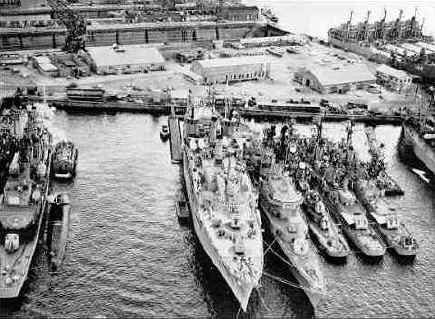 |

Some Personal Stories........
|
My name
is Marion Price, Capt. USNR-Ret. When I was on active duty ('64-'68) my
friends called me buz.
The reason I was searching the
Internet is this: The Navy (in cooperation with Gyrodyne) picked my ship,
USS Corry, DD-817, in early 1966 to be the "star" ship with its
DASH system for the Navy's new training film in DASH operations. Since I
was featured in this film as one of the controllers, I
was trying to locate a copy so my children could see what "daddy did
in the war." Mainly as a keepsake. By the way... you guys
wouldn't happen to have a copy of that film would you?
After I left active duty in the Navy, I went on to serve in
the Naval Reserve ( Intelligence) for several years and recently retired.
I am vice president of an advertising agency in Dallas, Texas.
I must say... when I saw the photos on your site, my eyes got a bit misty.
Thanks for keeping the dream alive... this system makes a lot of
sense...
even more so today!
Sincerely, M. S. "Buz" Price,

|
|
 My
name is Joel Labow and I went through DASH training at Dam Neck, Va. in
December 1967 and then was ASW officer and senior DASH controller on USS
McCloy (DE-1038) from 1967 to 1969.
My
name is Joel Labow and I went through DASH training at Dam Neck, Va. in
December 1967 and then was ASW officer and senior DASH controller on USS
McCloy (DE-1038) from 1967 to 1969.
McCloy was one of a semi-experimental
class of DEs that mounted a SQS-26 (AXR) sonar and bow-mounted ASROC (with
no magazine for reloads). IMHO to the end of the DASH era she and her
sister Bronstein were the only 2 ships that had the capability to make
full use of the system's full range capability. Under ideal sonar
conditions we once ran a successful attack with a MK 46 exercise torpedo
at 19,500 yards. Of course we also lost one very publicly on a UNITAS
cruise!
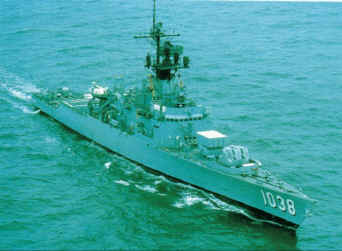 Bronstein and McCloy were equipped with the original
SQS-26 when they were commissioned in 1963 and in fact were purpose-built
to be test beds for the installation. They represented a halfway step
between the small Dealey class and the larger Garcias. They incorporated
the same 600 PSI engineering plant as the Dealeys, but interestingly even
though they were considerably larger they were faster as well, probably
because the large bow-mounted sonar gave them a more efficient hull form.
The original
systems were miserably unreliable and the SQS-26 AX installed in the
Garcias wasn't much better. When I joined McCloy in the summer of 1967 she
was in the yard getting the SQS-26 AX (major retrofit).....both she and
her sister went straight from SQS-26 to SQS-26 AX(R) without getting the
AX. This system was more reliable, but the Bronstein class was really too
small for this sonar.....the equipment rooms filled the entire forward 1/3
of the ship and we couldn't fire our forward 3"/50 mount without
dropping the sonar off the line! Bronstein and McCloy were equipped with the original
SQS-26 when they were commissioned in 1963 and in fact were purpose-built
to be test beds for the installation. They represented a halfway step
between the small Dealey class and the larger Garcias. They incorporated
the same 600 PSI engineering plant as the Dealeys, but interestingly even
though they were considerably larger they were faster as well, probably
because the large bow-mounted sonar gave them a more efficient hull form.
The original
systems were miserably unreliable and the SQS-26 AX installed in the
Garcias wasn't much better. When I joined McCloy in the summer of 1967 she
was in the yard getting the SQS-26 AX (major retrofit).....both she and
her sister went straight from SQS-26 to SQS-26 AX(R) without getting the
AX. This system was more reliable, but the Bronstein class was really too
small for this sonar.....the equipment rooms filled the entire forward 1/3
of the ship and we couldn't fire our forward 3"/50 mount without
dropping the sonar off the line!
The preceding top of the line system was the SQS-23, but I
don't think the SQS-26 evolved from the -23.....it was a completely new design to take advantage of bottom-bounce and convergence zone modes.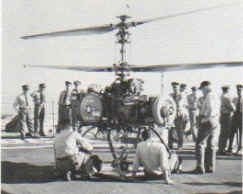
My favorite DASH 'war story'
took place on our 1969 UNITAS cruise. At that point the Navy was trying to sell the plans of the Bronstein class
to the Brazilians and so we were crawling with high-ranking BN officers. Wouldn't you know it.....our deck control box died just before a
demonstration night flight. Fortunately we were in company with a FRAM I and promptly got her to highline her box to us. By then it was almost
completely dark when I was doing my preflight check, and I couldn't really
see how the rotors were responding to the stick movements. As you have probably figured out by now.....the other ship's system was wired 180
degrees out from McCloy's, so when I launched the drone it did a '180' about 3" off the deck!
The emergency procedure for this is to
disconnect the box from the ship's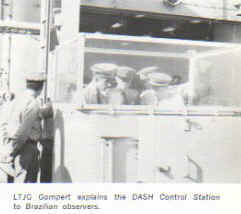 gyro, then put the drone in cruise mode and
reverse the heading by 180 degrees, then resume stick control and land.
Fortunately this worked like a charm and we were able to pretend to the Brazilian
admirals that this was a 'routine nighttime touch-and-go! I then proceeded
to my stateroom and shook for several hours! As you can see the episode made
a lasting impression since I still remember it clearly even though it was almost 32 years ago! BTW the Brazilians decided not to buy the
plans.....but hopefully not on the basis of our DASH misadventure. gyro, then put the drone in cruise mode and
reverse the heading by 180 degrees, then resume stick control and land.
Fortunately this worked like a charm and we were able to pretend to the Brazilian
admirals that this was a 'routine nighttime touch-and-go! I then proceeded
to my stateroom and shook for several hours! As you can see the episode made
a lasting impression since I still remember it clearly even though it was almost 32 years ago! BTW the Brazilians decided not to buy the
plans.....but hopefully not on the basis of our DASH misadventure.
After 5+ years as a DD/DE sailor I transferred to the Medical Corps and am about to retire with 35+ years service.
Best regards,
Joel Labow, CAPT, MC, USN
|
|

|
 I taught the electronics maintenance to five (I think), JMSDF officers.
The last I knew the JMSDF had only 10 QH-50's, and logged more time in the
air than the USN with its hundreds. The last I knew the JMSDF had
not lost a drone. Several years ago a DASH equipped JMSDF ship
visited San Diego, and I was able to go to the DASH hangar to see how they
did it. :-)
I taught the electronics maintenance to five (I think), JMSDF officers.
The last I knew the JMSDF had only 10 QH-50's, and logged more time in the
air than the USN with its hundreds. The last I knew the JMSDF had
not lost a drone. Several years ago a DASH equipped JMSDF ship
visited San Diego, and I was able to go to the DASH hangar to see how they
did it. :-)
Although I never saw a Snoopy version, I did have a couple of
students who went to that program. I did see some video taken by
Snoopy in Vietnam.
As I recall, the early QH-50D's crashed because of a missing
oil path in the transmission; the rotor mast would snap off after running
for a few minutes!
Flying a QH-50C/D from San Clemente Island to the ships was
interesting. The unmodified drones had an altitude range of +1000 to -200
feet from the launch altitude. The launch site on San Clemente is
more than 200 feet above sea level. Prior to launch, the drone was
made to think it was at about +750 feet. This was done by connecting
the altimeter test set to the drone's altimeter, and setting the test set
to +750 feet.
Good old days.
Cecil Houk, ET1 USN Ret., AG6I
|
|

|
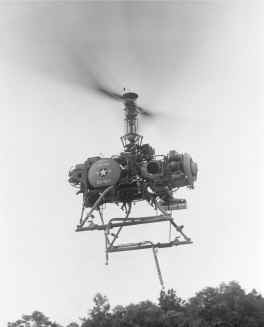 I was one of the first LANTFLT Navy trained Dash Controllers. My
training began at Utility Squadron 6 (VU-6) at Norfolk, VA in November
1962 and was completed in the spring of 1963. I then took my
detachment onboard USS J.C. OWENS (DD-776). The birds were grounded
during my short assignment on Owens while the problems with the
Electro-Mechanical Rotary Actuator were researched. I spent a month
or so at Pax River putting hours on the aircraft during this time. I
left the program in June of '63 to attend Destroyer School and never
served on a DASH ship again. I was involved in discussions at
COMCRUDESPAC in 1966 concerning the gunfire spotting role and saw some
video materials taken from the tests.
I was one of the first LANTFLT Navy trained Dash Controllers. My
training began at Utility Squadron 6 (VU-6) at Norfolk, VA in November
1962 and was completed in the spring of 1963. I then took my
detachment onboard USS J.C. OWENS (DD-776). The birds were grounded
during my short assignment on Owens while the problems with the
Electro-Mechanical Rotary Actuator were researched. I spent a month
or so at Pax River putting hours on the aircraft during this time. I
left the program in June of '63 to attend Destroyer School and never
served on a DASH ship again. I was involved in discussions at
COMCRUDESPAC in 1966 concerning the gunfire spotting role and saw some
video materials taken from the tests.
I now live in San Diego.
C. F. Bigsby, Capt USNR-Ret
|

|
From the Gyrodyne Helicopter Historical Archives,
written over 36 years ago, by
DASH Officer Lt. Jg Jerome M. Kopel, USN, of the USS VAN VOORHIS:
"USS
VAN VOORHIS, 29 September 1965: QH-50C DS-1281 was being flown with
weapons this day with takeoff normal with CIC taking control and flying
DS-1281 to 340 degrees at 5000 yards. At that point the course was
changed to 090 at 80 knots true airspeed. At 1651, an eyewitness
reported a puff of white smoke (flame out) and 1281 crashed into the
sea. The ship headed for the crash point with both oil and JP-5 seen
bubbling up to the surface. It is theorized that the flotation gear did
not work due to the exploding of the two MK 64 Mod SUS bombs which were
attached to the drone at the time of the accident. Cause of accident was
engine failure."
Now, to aid in our quest for
education, we asked two experts to explain what was a MK64 MOD SUS Bomb
was....and the explanation was stated as:
From CAPT Nelson Jackson, USN
(Ret.), CO RUPERTUS (DD-851) AUG ' 69 - JUL ' 71:
SUS
are low level explosive devices, about the size of a hand grenade but
much, much less explosive energy, which are used/detonated when working
against submarines in ASW training. They were developed and employed
to imitate an actual explosion when the destroyer/aircraft
"fired" at a sub contact. Previously, there were just
audio signals and frequently arguments "I got you!"/"No you
didn't!". SUS brought more realism into the game and minimized
the arguments.
From Wallace (Dusty) Rhodes (our
munitions expert!), Retired, Master Chief Torpedoman's Mate (TMCM):
SUS is Sound Underwater
Source or Sound Underwater Signal (I've heard them referred to by both terms over the last 38 years).
The SUS charges were used by
ships and aircraft, when non verbal (UQC/WQC) communications with a
submarine were inappropriate. These units
hold enough explosive to wreak havoc with equipment, but I don't remember where
their stores stations were on the DASH. From
Gyrodyne Helicopter Historical Foundation:
We don't know where the
MK 64's were loaded either...not a single picture or manual reference to
such an installation! |

|
Did you know that the Cruiser, USS BELKNAP (DLG-26) was
equipped with DASH?
I read your letter, with interest, in The Ping
Jockey about the DASH program. I am retired ST (E8) and was a 26 AXR sonar
tech and
instructor at FSS in Key West. Taught 26 AXR Maintenance from
1966-1969.
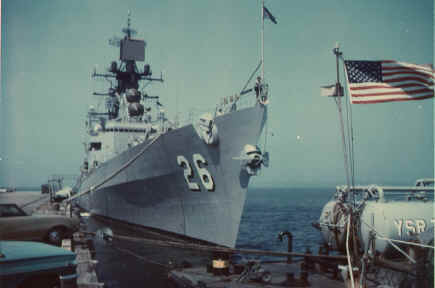 Before then I received GE training on the 26AX prior to it being retrofitted, I
was a member of the BELKNAP (DLG-26) pre-commissioning crew as an ST1 (E6 pay grade)
in Bath
Iron Works Sep '64 and served until May '66. The BELKNAP entered
Norfolk Naval Shipyard in early December 1965 for a month upgrade period
to be fitted with the DASH system. On January 11, 1966, BELKNAP
departed D & S Piers for three days of DASH Ship Qualification Trials
with a FRAM (?) Destroyer already DASH qualified. The BELKNAP, to my
knowledge, successfully operated the DASH System and handed off the Bird
with the other ship.
Before then I received GE training on the 26AX prior to it being retrofitted, I
was a member of the BELKNAP (DLG-26) pre-commissioning crew as an ST1 (E6 pay grade)
in Bath
Iron Works Sep '64 and served until May '66. The BELKNAP entered
Norfolk Naval Shipyard in early December 1965 for a month upgrade period
to be fitted with the DASH system. On January 11, 1966, BELKNAP
departed D & S Piers for three days of DASH Ship Qualification Trials
with a FRAM (?) Destroyer already DASH qualified. The BELKNAP, to my
knowledge, successfully operated the DASH System and handed off the Bird
with the other ship.
When the BELKNAP returned to the Norfolk D&S
Piers the word was
passed for Liberty Call with the exception of Supply, the DASH Det group
and AS Division. I inquired to the reason that liberty was on hold
and learned from the Sonar Maintenance Officer ENS. Ross Cameron that the
DASH System was scratched from installation on the BELKNAP Class ship.
We off-loaded every thing associated with DASH. The reason given was
that the authorities in Washington decided to configure these ships with a
manned aircraft.
This ended my association with DASH. I
never saw DASH after that. In 1969 I returned to sea on USS EDWARD
MCDONNELL (DE 1043) (in '75 re-designated FF 1043) and the only remnants
was the control station outside the DASH Hanger that most ships converted
to a Quarterdeck Shack. In the early 1970s, the GARCIA Class Fast Frigates
(FF 1040, 1041, 1043 through 1051), the KNOX Class Fast Frigates (FF 1052
- FF 1097) and the BELKNAP Class (CG 26 through CG 34) were fitted with
LAMPS I capabilities including the new telescoping hangar
KEN WRAY
BAE SYSTEMS, WASHINGTON, DC
AN/SQQ-89(V)2/7/8/10/12/14 & AN/SQS-53D(V)
|

|
The Issue of DASH Reliability related to DASH hours
actually flown
"Ken Wray has been passing to me some of
your mail concerning the demise of the DASH Weapon system. Ken and I were
consultants for NAVSEA Anti-Submarine Warfare (ASW) Systems for 12-15
years in which we interfaced on various programs and are very good
friends.
I am a retired Navy Line Captain and was the
Force ASW Officer/Air Officer for COMCRUDESLANT in Newport from
Approximately 1967-1969. During that period DASH was running into problems
mainly because of a few accidents and the fact that DASH was not meeting
the reliability standard of a loss for every 100 hours of operation. Most
of the problem was that ships WERE NOT FLYING DASH on a regular program
and as a consequence, pride and maintenance fell off. We instituted a
program that required all DASH ships to fly 4 hours a month. Pretty soon
there started a competition to see who could fly the most hours. One ship,
I believe the STEINAKER, kept a DASH in the air for over 24 hours. Pretty
soon reliability improved to something like 360 hours of operation for
every loss, and torpedo hit percentage with DASH rose into the 90
percentile.
We also did an ASW test using the HAMMERBURG
(DE 1015) using the sonobuoy launcher and monitor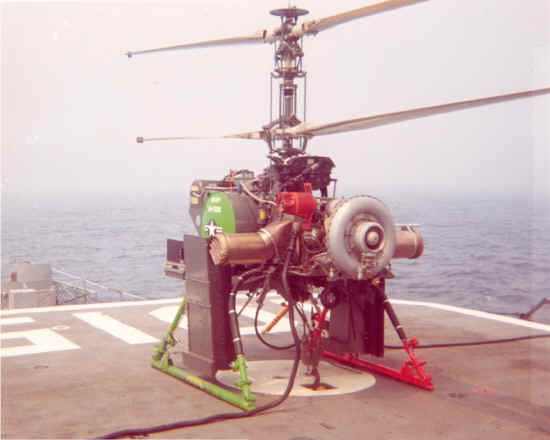 developed by Gyrodyne for the Navy (seen right).
We also fitted out extra fuel tanks, transponders, and telemetry for long
distance travel and monitoring. The evaluation results were OUTSTANDING
with the DASH operating out to 72,000 yards and monitoring the sonobuoys
with 92% detection and tracking. I remember one item in the report that
stated that the DASH was STILL TRACKING a surface ship at 16 miles, as the
DASH was LANDING on HAMMERBURG. I relayed this evaluation--even though the
numerics may be something different--because OPTEVFOR did not press on
with it.
developed by Gyrodyne for the Navy (seen right).
We also fitted out extra fuel tanks, transponders, and telemetry for long
distance travel and monitoring. The evaluation results were OUTSTANDING
with the DASH operating out to 72,000 yards and monitoring the sonobuoys
with 92% detection and tracking. I remember one item in the report that
stated that the DASH was STILL TRACKING a surface ship at 16 miles, as the
DASH was LANDING on HAMMERBURG. I relayed this evaluation--even though the
numerics may be something different--because OPTEVFOR did not press on
with it.
I would also pass to you that we sent monthly
reports to OPNAV concerning the progress we were making in DASH
reliability and effectiveness. Yet every time I visited OPNAV to discuss
this progress they kept feeding me with data from 1964-1965, which was
poor. It became quite evident that the Navy no longer wanted DASH and
wanted to move onto LAMPS (Light Airborne Multi Purpose System) manned
helicopters.
While COMCRUDESPAC was not into ASW as much
and relied on SNOOPY (reconnaissance version of the QH-50D) more, it was
because that they were primarily engaged in the Vietnam War. However, the
ASW officer at PAC and I had a goal to improve DASH reliability, which we
jointly did.
I remember going to Gyrodyne for Program
meetings and dealing with Mr. Peter J. Papadakos (founder and President of
Gyrodyne). He was a fine man and I still have a few tie pins and a picture
of a DASH that was presented to me by the DASH people at CRUDESLANT. If I
could be of any further help please feel free to ask."
Regards,
CAPT Chris Zirps, USN (Ret.)
|

|
The Issue of PACIFIC Fleet DASH using MK-44 Torpedoes:
From CAPT Nelson Jackson, USN
(Ret.), CO RUPERTUS (DD-851) AUG ' 69 - JUL ' 71:
Back in 1963-1965 when I was the CSO and OPS Officer for DESRON 23 we
did drop some dummy torpedoes from the DASH in ASW training with subs.
I recall at least twice this occurred. The ships in DEDIV 231, out
of Long Beach, at that time, were USS James E. Kyes (DD-787), USS Everett
F. Larson (DD-830)-see right, USS
Walke (DD-723), and USS Frank E. Evans (DD-754). Anyway, we did it.
I never employed torpedoes from DASH on Rupertus, nor do I remember any of
the other Yokosuka DD's ever using torpedoes in training. In fact,
we didn't do much ASW training; it was all Gun Line and chasing the
carriers in Vietnam.
Nelson Jackson.
|
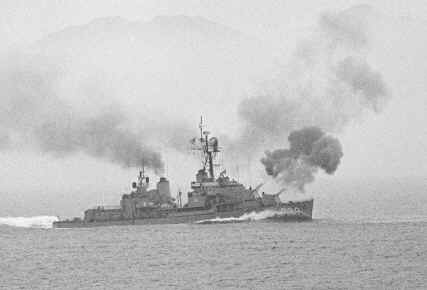
Above, the USS Everett F Larson (DD-830) fires off one
of its' six 5"/38AA guns. Commissioned April 6, 1945 and serving for
30 years, the Larson was subsequently stricken June 2, 1975, sold to South
Korea on October 30, 1972, renamed Jeong Buk and as on 1998, she is still
active in the South Korean Navy. |

|
I came across your web site, and am making this contribution to the
history of the DASH.
I was the Operations Officer on the USS Perkins
(DD-877) from 1962 - 1964. We completed our FRAM II overhaul in late 1962,
and spent the next several months working up towards a planned deployment
in October 1963. We were the second ship in the Pacific Fleet to
receive our DASH. I believe that the USS Buck preceded us by a week
or so. Our DASH s/ns were 1046 and 1057
(perhaps 1059).
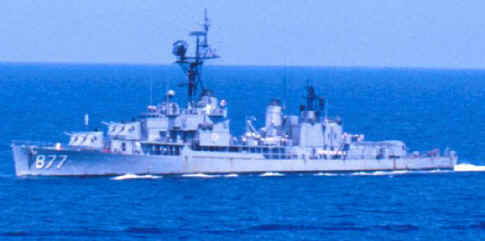 LTJG Tom Lynch headed our DASH Detachment. We flew the DASH fairly
often, but as we were often assigned to plane guard duties for days on
end, it was difficult to convince the OTC to let us fly the helo while
flight ops were in progress. Perhaps it was fear of mixing Foxtrot
and Kilo ops!
LTJG Tom Lynch headed our DASH Detachment. We flew the DASH fairly
often, but as we were often assigned to plane guard duties for days on
end, it was difficult to convince the OTC to let us fly the helo while
flight ops were in progress. Perhaps it was fear of mixing Foxtrot
and Kilo ops!
We did have one exciting evolution, however. In
June of 1963, President Kennedy visited the First Fleet, and VADM Ramage
had the force preparing and rehearsing for days in preparation for the
at-sea Naval Review. Perkins' role was to make a high speed pass up
through the formation with
our DASH in the air. On the day of the performance, we (and the
entire force) acquitted ourselves admirably, and the entire demonstration
went off without a hitch.
Perkins was the first ship to deploy to WESTPAC with
the DASH. Throughout our 6-month deployment we flew
"regularly", but as with our EASTPAC operations, there always
seemed to be the problem of interference with what the Task Group was
doing.
We did not lose either of our birds, and we always read carefully the
SITREPS and Damage Reports that were issued regarding damage or loss to
the DASH's.
CAPT Albert A. Nannini, USNR, Ret.
|

|
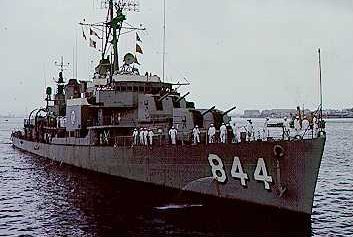 My son is trying to get me in trouble with the DASH people. Actually
I have little to contribute. I had command of PERRY (DD-844) late in
her life. She was the first FRAM I destroyer and I had command when she
was a little long in the tooth. These ships were modernized to
extend their lives 8 years and I had the ship at the start of the second 8
years. After I took command we only flew the DASH once as the system
was being removed from the ships about that time and we were getting ready
to deploy to WESTPAC. It was flown successfully but I must confess
that during the flight I could visualize the DASH flying into the after
stack and I really wasn't unhappy to see it go. I had heard lots of
horror stories. I felt at the time that success with DASH would depend on
a maintenance crew that really took and interest in the birds and just
didn't do the perfunctory maintenance. That plus actually flying
them as much as possible. Since PERRY was named for both Oliver and
Mathew Perry the crew named the two birds "Ollie and Mattie." I
think that PERRY had had a pretty good record with the DASH up to that
point.
My son is trying to get me in trouble with the DASH people. Actually
I have little to contribute. I had command of PERRY (DD-844) late in
her life. She was the first FRAM I destroyer and I had command when she
was a little long in the tooth. These ships were modernized to
extend their lives 8 years and I had the ship at the start of the second 8
years. After I took command we only flew the DASH once as the system
was being removed from the ships about that time and we were getting ready
to deploy to WESTPAC. It was flown successfully but I must confess
that during the flight I could visualize the DASH flying into the after
stack and I really wasn't unhappy to see it go. I had heard lots of
horror stories. I felt at the time that success with DASH would depend on
a maintenance crew that really took and interest in the birds and just
didn't do the perfunctory maintenance. That plus actually flying
them as much as possible. Since PERRY was named for both Oliver and
Mathew Perry the crew named the two birds "Ollie and Mattie." I
think that PERRY had had a pretty good record with the DASH up to that
point.
I'm not the one to nominate PERRY for the DASH Wall of
Honor, that should come from previous crew members. If I get any
info on the history of the PERRY with DASH at the next ships reunion I'll
send it along to you.
I have built a model of PERRY as a FRAM I and have been intending to build
a DASH model for the flight deck.
Capt. Peter J. Watson, USN, Retired
|

|
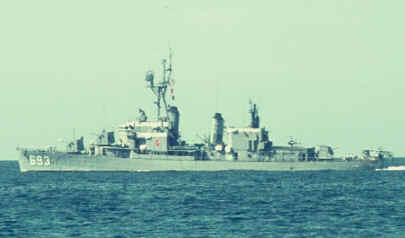 I only recently found your website about the DASH helicopters and was glad
to see a website on what I always considered to be a great aircraft.
My name is Alan R. Westfall, CAPT, USNR-Ret, and I was a DASH Officer on
the USS MOALE (DD-693) from Dec. '65 - Feb. '68. The CO of the ship
liked the DASH because we did not have the ASROC weapon system. DASH
was our best ASW weapon and the CO used it as much as possible.
I only recently found your website about the DASH helicopters and was glad
to see a website on what I always considered to be a great aircraft.
My name is Alan R. Westfall, CAPT, USNR-Ret, and I was a DASH Officer on
the USS MOALE (DD-693) from Dec. '65 - Feb. '68. The CO of the ship
liked the DASH because we did not have the ASROC weapon system. DASH
was our best ASW weapon and the CO used it as much as possible.
I wanted to share with you an event in which we
participated in July, 1967. Our squadron was DESRON 10. The squadron
was returning from a 6 month Med Cruise and my CO wanted to do something
with the helicopters on route home. I outlined a plan to have a DASH
helicopter in the air continuously for 48 hours.
The plan was based on a schedule that would rotate the flying
duty to each ship. The flight would be for one hour with a five minute
overlap for next flight. We used four destroyers (Moale, Rush, Roan,
Lloyd Thomas). Each ship had two qualified DASH Operators so they
could rotate flying the A/C.
The routine was:
1. Fly one hour
2. Rest two hours
3. Stand-by one hour (in case the scheduled ship could not lift-off)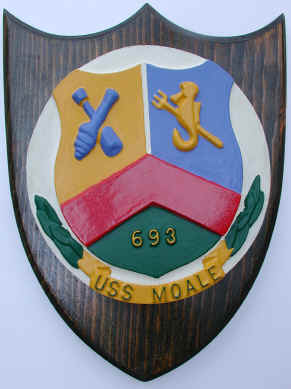
4. Fly again.
The exercise worked very well. All ships flew their
scheduled time and we kept a DASH in the air continuously for 48 hours.
Later in the year the MOALE received the Atlantic Fleet ASW Award for
outstanding ASW performance and the 48 hour Dash exercise was a
significant factor in winning that Award.
I loved flying the DASH Aircraft. We had a good maintenance
crew and flew whenever we could. The only problems we had were with
the radio control and guidance systems. If we had had today's
digital systems, we would have been able to tell the Navy to keep their
manned helicopters on the big ships. The airframe always performed as
expected.
I have always felt the DASH was a good transition system for
the manned helicopters that finally did deploy on the destroyers. It
got the "black shoes" used to having aircraft on board.
Thank you for letting me share this experience with you. I
know there are many old sailors like me who had a good experience with
your aircraft.
Alan R. Westfall
CAPT USNR-Ret
Houston, Texas
|

|
My name is Tom Lynch and
my involvement in the DASH program began in mid 1962. Here are some of the
details I remember, although the years may have dulled what were once
crisp and exciting memories.
I was selected as one of
the original people to set up the Fleet Introduction Site on San Clemente
Island, California. Others included Lt. Pete Lostrico, Ltjg's El
Chenoweth, Norm Andersen, Charlie Cook, Nick Ide and Jim Prather. We
were all assigned to Utility Squadron 3 at NAS North Island CA. We were
trained at the Gyrodyne Plant, St James, Long Island, NY. Some of us also
got some "stick time" at Pax River Naval Air Test Station. I
later served as the original DASH Officer aboard USS Perkins (DD 877), the
first DD to take the DASH to WESTPAC.
WESTPAC.
My detachment consisted
of Barringer, EM1; DeAcosta ET2; Goblirsch, AT1 and West, ADJ2. We flew
the QH50C and I believe our "bird" numbers were DS 1036 and DS
1047! We also used the DASH to transport critical spare parts (and
movies) between Perkins and other DASH equipped ships. A
few years after leaving Perkins, I was interviewed (1965 or 66 ?) in San
Diego by Hugh Downs, host of the old "Today " show. We did a
very brief segment on what DASH was, its mission, capabilities, etc.
As I recall, a
DASH equipped DD steamed very, very close to the beach, launched their
DASH and flew it within 200 yards of the city of San Diego to ensure the
TV people got good close-ups!!
I hope this helps and please let me know if I can be of any further
assistance.
Take Care
Tom Lynch
Lt, USN-Ret
|

|
|

|
It was 1969 and I was a Naval Reserve in
Reading
PA
and it was time to go active for two years.
I received my active duty orders for Duty:
shore at LANTFLTUSNAVDASHTRAUDAMNECK. I
had
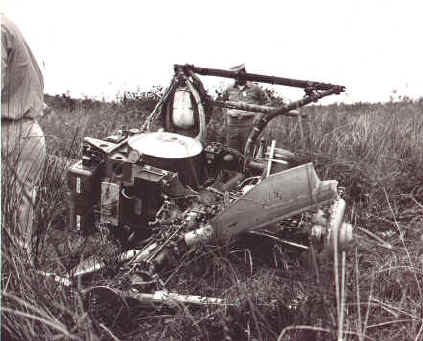 no Idea what these letters meant.
I drove from
Reading
to Dam Neck and discovered this duty was not going to be so bad.
Living in VA Beach was not too hard to take. Also, during my active
duty was the era of the “Z grams”.
The “Z grams” allowed; long hair, not having to wear dress
uniforms to drive home from base, beards and side-burns were allowed. no Idea what these letters meant.
I drove from
Reading
to Dam Neck and discovered this duty was not going to be so bad.
Living in VA Beach was not too hard to take. Also, during my active
duty was the era of the “Z grams”.
The “Z grams” allowed; long hair, not having to wear dress
uniforms to drive home from base, beards and side-burns were allowed.
Attached are two pictures
taken at DASH Training Unit, Dam Neck about 1970.
I was at Dam Neck from about ’70 till closing.
I was an Electronics Technician Third Class, USNR. I was mainly
responsible for all the airborne TV cameras and transmitters, as well as
all the TV ground receiving equipment.
We did seem to have a lot of
crashes at Dam Neck. We
dropped a lot of birds in the water. There were quite a few crashes while
I was there, I do remember that the inflation device and strobe never
worked when dropped in the water. We had to send in divers to locate
the remains. I also remember flying two birds at one
time and both went into the water. One
of the birds was carrying a payload from NRL.
This was towards the end of DASH Dam Neck, and I think the NRL pod
was to make the bird look like a ship – to an oncoming missile.
NRL was not very happy about our little failure.
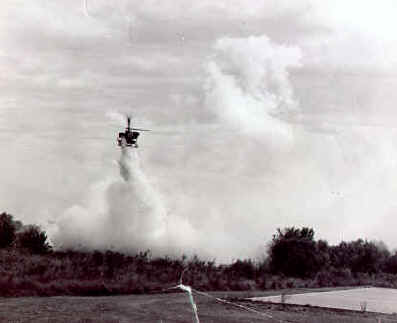 Toward
the end of DASH Dam Neck I also worked on CNO Project DS555. This was to
use the birds a radio relay for amphibious landings. Toward
the end of DASH Dam Neck I also worked on CNO Project DS555. This was to
use the birds a radio relay for amphibious landings.
Also worked on using
DASH, equipped with a TV camera, to drop small bombs, to disrupt enemy
vehicle traffic.
All programs seemed to go good, except for
the NRL project, but DASH Dam Neck was still closed.
One thing I will never
forget is that while we were at Dam Neck we always went to the base club
for lunch and always had a few beers.
Then get back to work after lunch and get ready to fly a bird.
Sometimes we would have to get under the bird while it was turning,
to check the video transmitter or something.
Of course the rule was to ALWAYS keep one hand on the deck.
Was it the safest thing to do after having a few beers?????
Rick Falkiewicz
Syracuse
,
NY
|
|

|
From: CRUISER-DESTROYERMAN Magazine
- October 1967
"BASILONE Shoots Herself - Using DASH to carry Camera"
The Newport based destroyer BASILONE , presently on duty
with
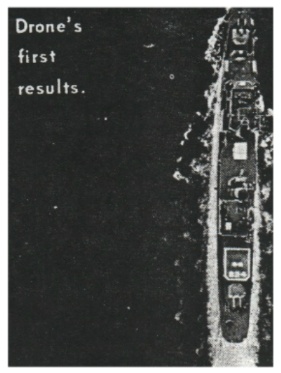 the
Sixth Fleet, has the
Sixth Fleet, has
accomplished what is believed to be a photographic first.
At the same time she has opened a new variety of possible uses for the DASH
[Drone Anti-Submarine Helicopter] weapons system.
By attaching a camera to the underside of the drone helicopter and rigging
the shutter release to the weapons drop switch, BASILONE 's DASH controller
positioned the drone over the ship and snapped a series of pictures.
Using a Polaroid Land Camera, the controller was able to return the drone
and the camera to the ship after each picture and check the results, with
refinements being made after each shot.
The camera was mounted in a variety of angles in order to get side views, as
well as overhead pictures.
BASILONE is now planning to mount a movie camera, and possibly a 35mm
camera, in which the film could be advanced with the drone in the air to
obtain a sequence of pictures.
Now, from the Controller who flew these missions........
I was fascinated, after all these years, to
discover (via Google) so many web sites connected with the former DASH
Weapons System. I was a DASH CIC controller on the USS BASILONE (DD-824)
from July 1966 to September 1967. I attended the DASH Dam Neck school in the
Spring of 1966.
While on a Med Cruise in the summer of 1967, our deck DASH
controller was infatuated with flying as much as we could find time or clear
seas. As noted in the release included in your history section, BASILONE
flew one of its units with a Polaroid camera aimed straight down hooked up
to the bomb release mechanism. We would launch the bird, transfer control to
CIC, and using the sound powered phones, I would be coached by the crew on
the deck into hovering the DASH directly above the ship. When all felt it
was in place, I'd flip the bomb switch and take our picture. We spent hours
launching, transferring control, hovering over the ship, taking the picture,
transferring back to the deck controller, landing, pulling out the picture,
re-cocking the camera, and taking off to repeat the cycle.
We got quite a few pictures with the ship
partially in the picture, but one really good one with the ship fully in the
shot. It may be a little better than the picture included in your history
section printed from the USS BASILONE release. I assume that picture was
from the ones we took, unless BASILONE continued the practice subsequent to
my departure in September 1967.
It was great reading the history of the weapons system. Is there a site for
former DASH controllers? Just curious.
Dave Welsh (formerly USNR LT)
November 2004
|
|

|
I was assigned as Training
Officer at Fleet Composite Squadron 3, Detachment San Clemente Island ( VC-3
Det SCI) from July 1965 to February 1967 training fleet controllers in
DASH. I accumulated over 300 hours as a DASH Controller. We trained twelve
controllers every six weeks. In one class we had 18 students because the
powers that be had scheduled six additional controllers from the Japanese
Naval Self Defense Force.
We developed a standardized curriculum of 30 hours for qualification,
starting with basic maneuver techniques and advancing through cruise
flights, and weapons loads (one dummy MK 44 centerline, two MK 44 dummies
and finally one MK 44 in a side load position. We did deck landings on a
flight deck built next to the control station.
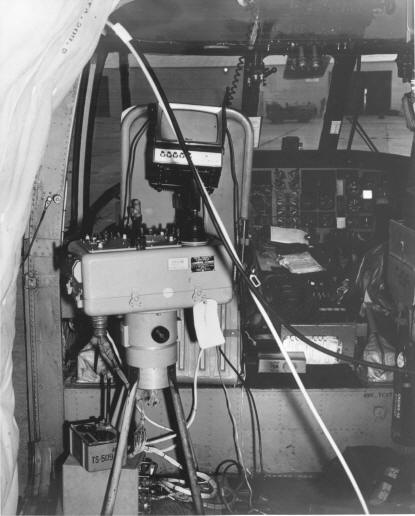 In 1966 Admiral Aurand of the Helicopter wing at Ream Field asked if we
could use the DASH to pick up a downed pilot. As a result we conducted
several test flights to determine if we could carry the weight of a person
hanging below the drone. We found that we could. We also developed the
capability to transfer control of the DASH to a CIC type control station on
board an SH-3A (seen right)
and conducted several test flights while controlling the DASH form the
manned helicopter. We mounted a closed-circuit TV on the drone to enable
the controller in the helicopter to maneuver the drone over a specific
target on the ground.
In 1966 Admiral Aurand of the Helicopter wing at Ream Field asked if we
could use the DASH to pick up a downed pilot. As a result we conducted
several test flights to determine if we could carry the weight of a person
hanging below the drone. We found that we could. We also developed the
capability to transfer control of the DASH to a CIC type control station on
board an SH-3A (seen right)
and conducted several test flights while controlling the DASH form the
manned helicopter. We mounted a closed-circuit TV on the drone to enable
the controller in the helicopter to maneuver the drone over a specific
target on the ground.
We picked up a volunteer form the SEAL Training Base on San Clemente, and
transported him several hundred yards and put him back in the water. As a
final test a fleet unit launched a DASH from a DD, transferred control to
the unit in the SH-3A, transited to San Clemente Island, located and picked
up a dummy, transited back to the vicinity of the DD, and placed the dummy
in the water, where it was picked up by ships boat, and then transferred the
DASH back to the DD where it was successfully recovered.
Admiral Aurand wanted to develop the capability to use DASH to rescue a
pilot downed in North Vietnam, where there was too much risk to insert a
manned helicopter. His only requirement was that all test and development
be done locally so the system could be ready to go with minimum delay due to
test and development.
When the CCTV was mounted we determined that it also had potential for use
in reconnaissance, and for spotting shore bombardment. We launched a DASH
and spotted gunfire during a gunnery exercise at San Clemente Island.
I left the Navy before any of these systems were ready for deployment, and
do not know if they were ever deployed. I seems that this may have been a
precursor to the reconnaissance drones that were used later in Viet Nam.
Raymond H.
Wickman
February 23,
2004
|
|

|
Found you site and loved it. I served on the USS Buck
(DD-761) from 10/68 - 10/71 and the majority of that time served was in the
DASH crew as an ETR2. DASH was inactive when I transferred off but was still
on the ship
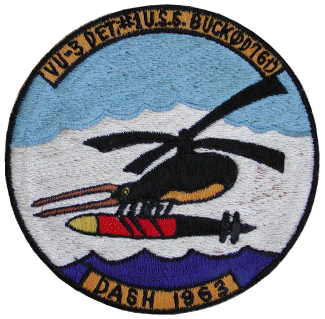 and
removed shortly afterwards. and
removed shortly afterwards.
I remember reading the old original DASH logs about testing
etc. right after the FRAM conversion, seems I was told it was early in '62
and was the first west coast DD to get DASH. Things I remember about being
in the DASH crew: Loudspeaker passing the word 'Holiday routine' followed
immediately by 'Flight Quarters', taking control of another ship's DASH helo
for a while, dropping a message on the flight deck of another can that had
just lost their drone by landing it wrong and it rolling across the deck and
off the side when the handling wheels were put on.
Somewhere I also have a 100 hours belt buckle that we
got for flying an almost non-stop 100 hour marathon for some contest or so,
at about 104 hours the aft controller quit. I also remember when the aft
controller's gyro went a little out of spec and the three replacements we
got were all broken, I ended up taking the original apart and bringing it
into +/- 1 degree error after working on it for about a week. On my old
ships jacket I have the DASH patch we had made up, I think I slipped in the
25 hours service bit because of all the flying we were doing at the time.
Our DASH emblem for our ship was a flying grasshopper carrying a torpedo
with it's legs and rotor blades coming out it's back, we had a stencil for
that but it is long gone I think.
Mike Winchester,
July 29, 2004
|
|

|
I told a fellow employee, B-52 driver, that I used to fly a "DASH" He
looked it up on the web and showed me your site.
I was the DASH officer and deck controller on the USS Warrington (DD-843)
based in Newport, RI, from September, 1967, until our regular overhaul in
1969 when the system was off loaded.
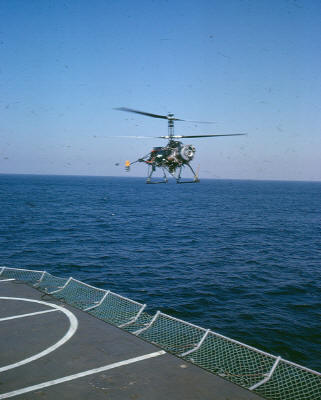 Our XO liked to claim records. So, he painted the nose of our DASH blue and
directed me to launch the aircraft before we proceeded north across the
Arctic circle in March/April of 1968 and then land it after we had crossed
the circle. He could then claim that our ship flow DASH across the Arctic
circle.
Our XO liked to claim records. So, he painted the nose of our DASH blue and
directed me to launch the aircraft before we proceeded north across the
Arctic circle in March/April of 1968 and then land it after we had crossed
the circle. He could then claim that our ship flow DASH across the Arctic
circle.
This was true! but I nearly froze in the process.
One other memorable event. I never lost one, but came close. The CO was
standing over my shoulder one day at the deck station as I was doing air
work.
Hovering at about 1000 feet, I started a vertical descent. At about 700
feet, I started cranking in Up collective. But the bird continued down,
almost appearing to accelerate its downward descent. All I could do was
crank in maximum up collective.
Finally, at about 200 feet, I guess it started to find some ground effect
and stopped its descent. The CO smiled and showed his appreciation for my
skillful airmanship demonstration. Little did he know about how much I was
sweating!
He did not realize that until, the drone stopped its descent, I had been
rehearsing in my mind all of the paper work that I was about to have to
complete.
When I returned to CivLant, I earned my airline transport rating and
aircraft mechanics license. I would love to fly the DASH again. If we
could put some cameras and gyro-stabilized sensors on board, I will
volunteer to fly patrol over the Tucson sector for free! In fact, I would
probably pay to do this.
Jim Diehl
May 31, 2005
|
|

|
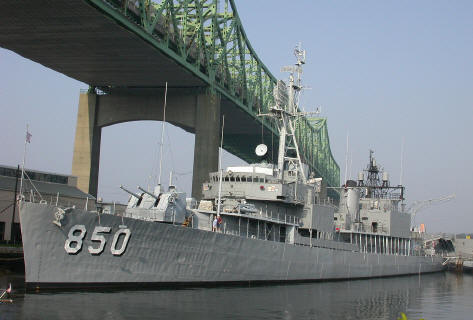 When I graduated from the U. S. Naval Academy in 1959, I
reported aboard the USS ANTIETAM (CVS-36) as Radio Officer and later, as a
Lt. Jg., became the Assistant Navigator. In June of 1961, I was sent to CIC
Officer/Air Intercept Controller School in Glencoe GA. (Brunswick, GA) and
by January 1962, I had joined the crew of the USS JOSEPH P. KENNEDY JR.
(DD-850), then undergoing FRAM Conversion in the Brooklyn Naval Shipyard. I
became the CIC/ECM Officer and DASH Intercept Controller on the KENNEDY from
FRAM Conversion (spring 1962) until June 1963.
When I graduated from the U. S. Naval Academy in 1959, I
reported aboard the USS ANTIETAM (CVS-36) as Radio Officer and later, as a
Lt. Jg., became the Assistant Navigator. In June of 1961, I was sent to CIC
Officer/Air Intercept Controller School in Glencoe GA. (Brunswick, GA) and
by January 1962, I had joined the crew of the USS JOSEPH P. KENNEDY JR.
(DD-850), then undergoing FRAM Conversion in the Brooklyn Naval Shipyard. I
became the CIC/ECM Officer and DASH Intercept Controller on the KENNEDY from
FRAM Conversion (spring 1962) until June 1963.
Sometime in March or April of 1962, I was sent to DASH
Controller School, out on Long Island, at the GYRODYNE facility. What stands
out in my mind, is the bravery of the test pilot, Don Hollis, who was
sitting in the modified DASH Helicopter we learned to fly. If he had a full
head of hair, I’m sure it was white. I know we gave him a lifetime of
“pucker moments”. Yet, he didn't let any of us crash the bird in spite of
our lack of skill. I guess he had a big incentive, his life. This guy was my
hero.
We were trained to operate the DASH Helicopter from launch to
recovery from the hangar deck, as well as from CIC on attack missions.
However, my station was in CIC for the purpose of attacking submarines. Only
under an emergency would I launch and recover the weapon from the hangar
deck. There was another controller, the Deck Controller, for that task. Once
launched by the Deck Controller, the Intercept Controller in CIC took over.
After the mission, I would place the helicopter on station near the ship and
turn control over to the Deck Controller for the recovery. This was the man
with the real skill.
As far as the DASH set up in KENNEDY ’s CIC, you’ll have to
bear with the fuzziness of an old sailor’s memory. To begin with, I had to
be in a position to see the plotter clearly. As I recall, the controller was
placed on the after starboard corner of the NC2 plotter. The plotter was
near the port bulkhead. As the controller, I either faced forward toward the
door from the bridge and watched the plot to my left or faced the plotter
directly to port from the starboard side of the plotter. Each ship was
configured differently. During FRAM Conversion, the CIC and DASH teams had
the latitude, within reason, to set up CIC in a way that best suited the
team. Len Barrett, one of my Radarmen, might have a better memory on the
exact placement, since he spent a lot more time in that space than I did.
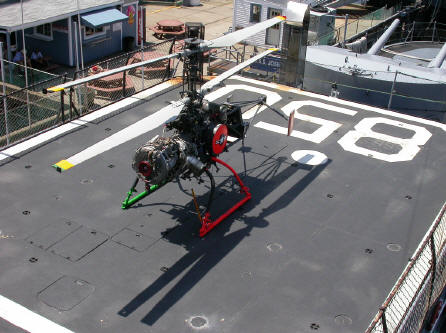 As a concept, the DASH weapons system was a great idea at the time. It gave
the destroyer stand off ability, surprise and devastating destructive power.
Although, when we operated the DASH Helicopter, it was always a moment of
great anxiety and excitement, wondering if we would ever get it back aboard
ship safely. Wonder of wonders, we did. However, there were fleet reports of
the bird ignoring instructions and happily flying away, over the horizon, on
the last vector it was given. I am happy to say, that never happened on the
Kennedy when I was a controller, thanks to the skills of the sailors on the
DASH team – both on the hanger deck and within CIC.
As a concept, the DASH weapons system was a great idea at the time. It gave
the destroyer stand off ability, surprise and devastating destructive power.
Although, when we operated the DASH Helicopter, it was always a moment of
great anxiety and excitement, wondering if we would ever get it back aboard
ship safely. Wonder of wonders, we did. However, there were fleet reports of
the bird ignoring instructions and happily flying away, over the horizon, on
the last vector it was given. I am happy to say, that never happened on the
Kennedy when I was a controller, thanks to the skills of the sailors on the
DASH team – both on the hanger deck and within CIC.
GITMO Cuba was our first port of call after FRAM Conversion
(late May or early June of 1962) – an eternity of shakedown, instrument
calibration and training. What a place to be in the middle of summer, living
under the hangar deck without air conditioning. After successfully passing
the Post FRAM Quals., we were dispatched to Newport, RI, nesting with our
squadron, DESRON 10 and our families. That fall, we left for the Cuban
Missile Crisis and took our station in the blockade. The KENNEDY was the
only US ship to board a Soviet chartered freighter during the conflict. Our
Captain was CDR. Nikolai Mikhalevski (sp.), who hailed the freighter, in
fluent Russian, to "heave to and prepare to take on boarders" We sent a
formal boarding party aboard, under the command of the XO in dress whites
replete with swords and small arms, to inspect for missiles and other
offensive hardware. We sent her on her way after finding her clean.
On our return to Newport, in December of 1962, we began
perfecting our ASROC and DASH skills in months of ASW training exercises in
the Atlantic until I left active duty in June 1963.
James B. Rucker, Jr.
DASH Controller,
USS JOSEPH P. KENNEDY JR. (DD-850)
November 5, 2004
|
|

|
Remembering DASH
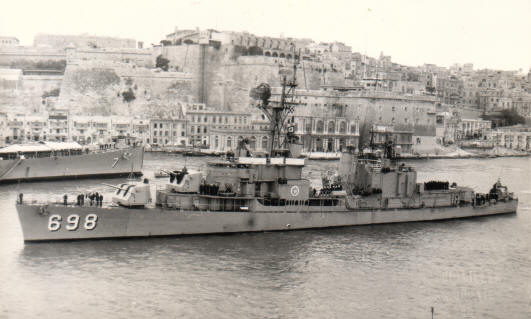 It
was in 1963 that I completed the Tin Can Sailor's version of flight
training, and became the 14th officer qualified to pilot the QH-50C Drone
Anti-Submarine Helicopter. In classrooms at Dam Neck, Virginia, we learned
the basics of rotary wing flight. Out on the concrete pad at water's edge,
we first stood at the controls of this odd-looking bird - a kind of big,
leggy insect, with all the working parts on the outside. It
was in 1963 that I completed the Tin Can Sailor's version of flight
training, and became the 14th officer qualified to pilot the QH-50C Drone
Anti-Submarine Helicopter. In classrooms at Dam Neck, Virginia, we learned
the basics of rotary wing flight. Out on the concrete pad at water's edge,
we first stood at the controls of this odd-looking bird - a kind of big,
leggy insect, with all the working parts on the outside.
Following training, I reported aboard USS AULT (DD-698).
She'd completed FRAM conversion six months earlier. Her two little
helicopters came aboard in Norfolk, along with three experienced aviation
specialists who never thought they'd serve aboard such a small ship. We
assigned work benches and set up a coffee mess in the hangar. The crew, all
veterans of flattops, found it amusing that the coffee pot had to be secured
against heavy weather. Our two birds we affectionately named Flotsam and
Jetsam. It was now official. We were the 7th Operational
DASH Detachment.
Once at sea, we flew as often as we could. It was a pleasant
routine, rolling the bird out on deck, removing the wheels, tightening the
hold-down to a flush deck cleat, attaching the umbilicals. After getting
permission from the bridge, I'd crank up the 300 horsepower turbine. The
gradually rising pitch of the starter would lead to a satisfying,
deep-throated whomp as the engine ignited and then came up to speed. The
pre-flight check was brief. As my crew chief liked to say, "The two rotors
are going in opposite directions; she's good to go."
I recall that there was a momentary reluctance to pop the
umbilicals, knowing from that moment on we'd no longer be getting anything
other than visual data about how Flotsam or Jetsam was doing. The absence
of any telemetry meant you were flying blind, a seat-of-the pants kind of
operation with not an instrument in sight. In fact, it was partly that
barnstormer attitude that made it fun. I'd notify the bridge that we were
ready. If it were windy and we were operating independently, the OOD would
turn so we had the relative breeze on the port bow which meant less
turbulence from the hangar. I'd release the tie- down, dial in some
collective with my thumb, and we were airborne.
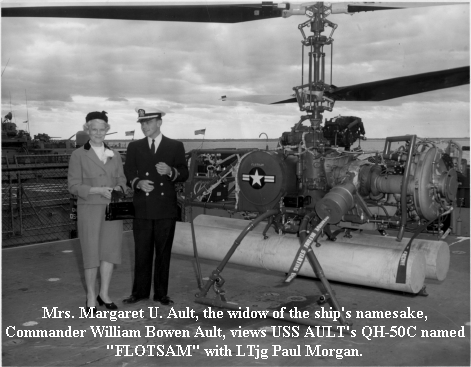 I enjoyed standing at that console, with its joy stick and
altitude knob. It would be more than 20 years before hand held video games
flooded the market, but back then I already had a sense of why the craze
would take hold. And from the beginning we did our best to show off our new
birds. We flew Flotsam near the USS ALBANY while SECNAV was on board. It
was his first look at a QH-50C. I enjoyed standing at that console, with its joy stick and
altitude knob. It would be more than 20 years before hand held video games
flooded the market, but back then I already had a sense of why the craze
would take hold. And from the beginning we did our best to show off our new
birds. We flew Flotsam near the USS ALBANY while SECNAV was on board. It
was his first look at a QH-50C.
We were often in company with the relatively new USS
ENTERPRISE (CVN-65), acting as her plane guard, being told to do our best
when she'd crank it on, well beyond our flank speed, and speed away over the
horizon. More than once, I flew along with her manned helicopters. Two of
her "angels" would assume positions astern of our bird, left and right. We
were careful to keep the maneuvers modest, making turns in small segments.
The pilots were impressed with her maneuverability and how sharply she could
come about. They seemed to like our little rascals, and there were
indications that collaboration and joint operations would be possible.
However, from the beginning I knew that we were the interlopers and needed
to defer to them.
Ours was the first DASH Detachment to deploy to the Med. On the day we
joined the carrier task group off Gibraltar, I was on the bridge. We sent
the Task Group commander a request to conduct flight operations. The flag
duty officer, certain that we had screwed up, quickly responded that we
should check the signal book. Destroyers do not usually ask for permission
to fly! We reaffirmed our request. There was a long pause. He must have
checked the op order where it listed our QH-50 capability. The request was
granted. Our first flight within the formation caused quite a stir. A
message of appreciation from the Sixth Fleet Commander was answered by our
captain, with some details about our detachment and, specifically, that our
birds were called Flotsam and Jetsam. On subsequent days, the admiral
would send greetings and ask which of the two birds was in operation.
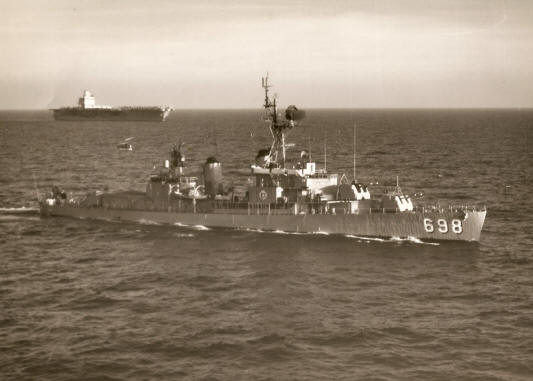 On one
occasion, the USS ENTERPRISE paid a surprising tribute to us DD aviators.
We were in a screen position, conducting local DASH flight ops.
ENTERPRISE designated our ship as the guide and signaled she was changing
her position. Showing off her speed and maneuverability, she came
around and fell into place 1500 yards off our starboard quarter - in classic
plane guard position, the position we so often took on her. A couple
of her helos were in the air and documented it. It was a treat … an
imaginative and unusually gracious, modest, and accommodating gesture for
the Big “E.” On one
occasion, the USS ENTERPRISE paid a surprising tribute to us DD aviators.
We were in a screen position, conducting local DASH flight ops.
ENTERPRISE designated our ship as the guide and signaled she was changing
her position. Showing off her speed and maneuverability, she came
around and fell into place 1500 yards off our starboard quarter - in classic
plane guard position, the position we so often took on her. A couple
of her helos were in the air and documented it. It was a treat … an
imaginative and unusually gracious, modest, and accommodating gesture for
the Big “E.”
"Big E"
was, of course, pretty sure of itself. Particularly in its early days. When
a destroyer went along to re-fuel, the signalmen would send word to the
ship: “You are the 18th ship to refuel from the nuclear power Enterprise.
Congratulations.
As we started our approach, our skipper sent a message: “Congratulations;
You are the first nuclear powered-carrier to refuel the USS AULT.” He
pre-empted their message, and I think they were pissed off.
On the AULT we had great success with night flights, and I
found the birds relatively easy to land in heavy weather. My engineman was
a fireplug of a guy, adept at sliding across the wet and heaving deck to
quickly get a tie down chain on her as she touched down. All three of my
crew of specialists were outstanding, training the other members of our
detachment, keeping the birds flying, never losing a one.
We did some ship-to-ship transfers, using the QH-50. The
most memorable involved fresh doughnuts from our galley, made by one of our
very talented bakers. We were in company with other ships of our squadron
and made arrangements to maneuver close to the DD carrying the flag. We put
the doughnuts in a cardboard box, hung below our bird on a long string. We
took off, lifted the box clear of the deck, then translated our bird over
the other ship's fantail. Easing her down gradually, the box was caught by
a boatswain's mate who cut the string and handed the doughnuts to the
commodore. We described it in our log a defining and
historical moment in vertical replenishment. I know subsequent
detachments passed control to other ships, but since we were always the only
DASH ship, all the maneuvering was from our deck.
I recall only one really scary moment. I was flying in the
vicinity of the USS SARATOGA (CVA-60). It was a line of sight event, from
the flight deck, and I was maneuvering at about her flag bridge level. The
intention was to fly beyond, then circle around her, and then return. About
half way through the evolution, as Jetsam was about to disappear behind the
carrier's island, I realized that I had no real idea about the relative
distance of the carrier and my small bird. Was I on the far side of the
carrier, or not?
It was a great relief when the bird emerged from behind the
island, without making contact. We were never chastised on the radio for
flying too close, so perhaps my margin was good enough. Or maybe the
admiral thought I knew what I was doing, buzzing his bridge. As for me, I
said a prayer of gratitude and promised myself never to try such a thing
again. It was one of many experiences I had that reminded me of how often
our ships are right out there on the edge, led by enthusiastic -- but very
young -- men and women. Hard to imagine how any skipper sleeps at night.
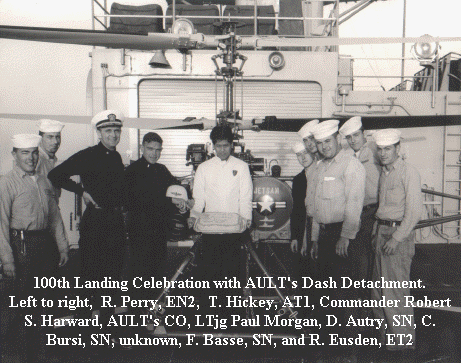 Somewhere, I've got a record of the number of landings and amount of flight
time accrued during my year-long tour. During that time, we continued to
successfully exercise our birds. There are photos of the CO
and his DASH detachment, with a cake celebrating our 100th landing.
And in a cruise book, we have a picture of a cake with 500th
landing written in icing. They were good birds and the crew did a
fine job of keeping them operational.
Somewhere, I've got a record of the number of landings and amount of flight
time accrued during my year-long tour. During that time, we continued to
successfully exercise our birds. There are photos of the CO
and his DASH detachment, with a cake celebrating our 100th landing.
And in a cruise book, we have a picture of a cake with 500th
landing written in icing. They were good birds and the crew did a
fine job of keeping them operational.
After I left the navy and later learned that the QH-50's were
no longer in fleet use, I wondered how much of their demise was because of
turf wars - a reaction to the effrontery of a destroyerman claiming a place
in the aviator's skies. And that led me to wonder whether we should have
had aviators or aviation officers of some stripe, flying our Flotsams and
Jetsams. Maybe they would have worked out a longer or more peaceful
coexistence. In some areas I believe we're making progress in healing this
sort of breach. NASA, after very divisive times, is working to bring
robotics and manned flight - especially exploration -- into a joint effort.
The armed services are bound to eventually recognize the values of a
partnership, not a rivalry, between man and machine. Though star-crossed,
the QH-50's contributions and demonstrated practical value will continue to
help this effort.
During those early days of DASH, I sent in a number of proposals for
augmented mission capabilities, tactics, and additional onboard equipment.
The potential was enormous. Surveillance, target designation, communication
relay, search and rescue, critical parts transfer. The possible return on
such a small investment could have been significant, expanding the
destroyer's horizons, literally and figuratively. I never received a
response, but it was fun to be in at the beginning and to consider the kind
of options that would be exercised with gun fire support in Viet Nam. But
that’s another story.
All I
can say in closing is that flying the QH-50C was a treat.
Paul Morgan,
DASH officer and deck controller; Sept. 1963 to Sept. 1964
USS AULT (DD-698)
April 27, 2005 & BIG E photo added April 16, 2011
|
|

|
I looked at your website and am impressed. It is
really comprehensive.
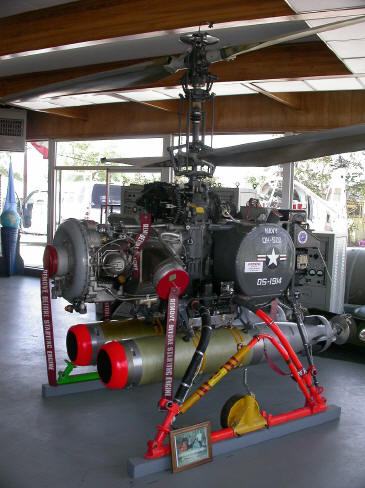 I
served in two FRAM I destroyers. The first,
USS VOGELGESANG (DD-862),
was a LANTFLT ship engaged in ASW for much of my tour. I was the DCA but
due to conflicts in pipeline training and deployment schedules I found
myself controlling DASH too. Since DASH was a weapons department asset it
was rare to find a snipe with his hands on the controls. I was generally
stationed in CIC since the 1st Lt. favored the deck and he was
senior. We flew the “Charlie Bird” (QH-50C) when I first arrived in
January 1967 but transitioned to the “Delta” (QH-50D) soon thereafter. I
really enjoyed the “Delta” with its greater power and therefore payload.
Although the “C” could carry two MK-44’s you had to be careful on a warm
day. I remember Dave, (David Norton was the 1st Lt.) taking a
bird off with two torpedoes aboard and having it settle into the water
20ft off the ship’s starboard quarter. He reacted quickly and shifted
control to me in CIC because he could not release a weapon from the deck
station, I released one weapon and flew the bird free of the ship from
CIC. The old man nearly had a heart attack! I guess, like manned
aircraft pilots, nearly every DASH controller has a story of an exciting
event or two in his pocket. We sure had fun and in retrospect, we were
very good with the system. Our accuracy was at least as good as the ASROC
and we had the advantage of placing the weapon right in front of the
submarine. Unfortunately, we were only as good as our sensors and the
nukes were quickly reducing our sonar’s effectiveness to nothing. I
served in two FRAM I destroyers. The first,
USS VOGELGESANG (DD-862),
was a LANTFLT ship engaged in ASW for much of my tour. I was the DCA but
due to conflicts in pipeline training and deployment schedules I found
myself controlling DASH too. Since DASH was a weapons department asset it
was rare to find a snipe with his hands on the controls. I was generally
stationed in CIC since the 1st Lt. favored the deck and he was
senior. We flew the “Charlie Bird” (QH-50C) when I first arrived in
January 1967 but transitioned to the “Delta” (QH-50D) soon thereafter. I
really enjoyed the “Delta” with its greater power and therefore payload.
Although the “C” could carry two MK-44’s you had to be careful on a warm
day. I remember Dave, (David Norton was the 1st Lt.) taking a
bird off with two torpedoes aboard and having it settle into the water
20ft off the ship’s starboard quarter. He reacted quickly and shifted
control to me in CIC because he could not release a weapon from the deck
station, I released one weapon and flew the bird free of the ship from
CIC. The old man nearly had a heart attack! I guess, like manned
aircraft pilots, nearly every DASH controller has a story of an exciting
event or two in his pocket. We sure had fun and in retrospect, we were
very good with the system. Our accuracy was at least as good as the ASROC
and we had the advantage of placing the weapon right in front of the
submarine. Unfortunately, we were only as good as our sensors and the
nukes were quickly reducing our sonar’s effectiveness to nothing.
My second destroyer tour was as Weapons Officer in
USS FECHTELER
(DD870). Her DASH was removed before I reported in
April 1969.
As a go through my 30 years of accumulated “stuff” I’ll look for anything
you might find interesting. If I find it I’ll pass it along.
James W. Orvis
DASH deck controller; Jan. 1967 to March 1969
USS VOGELGESANG (DD-862)
May 14, 2006
|

|
|
 I
read with interest the various web sites recounting recollections of the
DASH program. I served on the USS BRIDGET DE 1024 and the USS Piedmont AD-17
from about 1967 to 1968 with my responsibility being the ship board
electronics. The Bridget flew DASH on a very limited basis. I remember one
time where either the surface or air search radar were down on the ship, we
launched in a haze and the “bird” got very near it’s 10 nm range before
being picked up on radar. The CIC officer aimed it back toward the ship and
the captain got almost the entire crew out on deck to look for it as it
approached the ship. That flight came to a successful conclusion. I
read with interest the various web sites recounting recollections of the
DASH program. I served on the USS BRIDGET DE 1024 and the USS Piedmont AD-17
from about 1967 to 1968 with my responsibility being the ship board
electronics. The Bridget flew DASH on a very limited basis. I remember one
time where either the surface or air search radar were down on the ship, we
launched in a haze and the “bird” got very near it’s 10 nm range before
being picked up on radar. The CIC officer aimed it back toward the ship and
the captain got almost the entire crew out on deck to look for it as it
approached the ship. That flight came to a successful conclusion.
Just prior to my transfer to the Piedmont they flew a bird while enroute
from Subic Bay to Kaosiung probably in April or May of 1968. I did not
witness it but apparently it crashed after responding in exactly the
opposite direction to the stick commands that the flight deck pilot put in
on launch. I’m told the bird just missed a 30 foot whip antenna just forward
of the hangar, did a roll to the right and went into the ocean upside down.
As I recall, standard flight protocol always took the bird back over the
fantail. It had good floatation capabilities which deployed and they
recovered it. I saw it later and recall that the JP-5 fuel take had
apparently exploded because one end of the tank was blown out.
My recollection is that the wiring to the gyro was 3-phase [my description
and not technically correct] and I was quite sure that it would have been
impossible for them to have that wiring messed up such that it would respond
exactly 180 degrees opposite.
I remember the elevation problem associated with the training site on San
Clemente Island . I don’t remember the exact circumstances but saw one of
the officers in training fly a bird right into the west side of the island
with the altitude indicator at the [my recollection of his verbal report]
1,000 feet maximum for the QH-50.
My memories of DASH were all positive. In retrospect it seemed to me a very
creative approach to ASW that never fully realized it’s potential.
Richard Beach
ET USN
1964-1968
June 24, 2006
|
|

|
|
My name is Peter Berg and I was the
Dash Deck Officer aboard the USS John A. Bole (DD-755) from '65-'66. Bole
was homeported in San Diego. We are in the process of getting an officers
reunion together for May '07 and I found your the DASH website in doing some
homework to try to bring back some old memories.
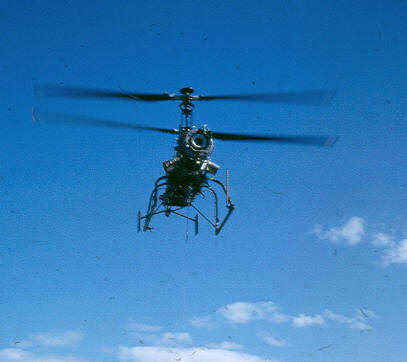 I went through my DASH training on San Clemente island, CA. Our birds were
named Joann and Mary Ann (I think those were some girlfriends of the
previous DASH officer). My most memorable experience with DASH was similar
to one previously described by LTjg Joel Labow. We went through our
preflight procedures, turned up the bird, lifted off and WHAM the bird turns
180 degrees. As soon as it happened I knew what I did. I obviously did not
align the ships' gyro with the birds' gyro (a fundamental procedure). Now
the controls are 180 degrees out of sync. I push the stick left, the bird
goes right; move the stick right, the bird goes left; push the stick back
the bird comes forward; move the stick forward, the bird goes aft. Only the
altitude controls works as intended. Unlike Ltjg Labow I did not recall the
emergency realignment procedure (must have slept through that lesson). So I
informed the Captain on the bridge that we had a slight problem with our
airborne bird and asked if he can hold course while I figure something out.
I went through my DASH training on San Clemente island, CA. Our birds were
named Joann and Mary Ann (I think those were some girlfriends of the
previous DASH officer). My most memorable experience with DASH was similar
to one previously described by LTjg Joel Labow. We went through our
preflight procedures, turned up the bird, lifted off and WHAM the bird turns
180 degrees. As soon as it happened I knew what I did. I obviously did not
align the ships' gyro with the birds' gyro (a fundamental procedure). Now
the controls are 180 degrees out of sync. I push the stick left, the bird
goes right; move the stick right, the bird goes left; push the stick back
the bird comes forward; move the stick forward, the bird goes aft. Only the
altitude controls works as intended. Unlike Ltjg Labow I did not recall the
emergency realignment procedure (must have slept through that lesson). So I
informed the Captain on the bridge that we had a slight problem with our
airborne bird and asked if he can hold course while I figure something out.
The DASH
held one hour worth of fuel, so I had less than 59 minutes do something. I
was determined to bring the bird back aboard safely. I did not want to have
to file a lost bird report and have to explain my mistake. And in the back
of my mind I thought about a Naval Review Board of Inquiry and me being
severely reprimanded for losing a bird. So I started practicing learning to
fly the DASH with backward controls. After several minutes I started
feeling more comfortable with the controls 180* out of sync and brought the
bird in toward the ship. Of course I had to back-off several times as the
bird came in out of position and this was not always easy. On one occasion
with the bird coming in I determined it was not aligned right, dialed up for
more altitude and pushed the stick away. But because the controls were 180
degrees out of sync, the bird did not go back but flew forward right over
the aft radar and stack. Thank god I had enough altitude to clear
everything.
The end of this story is
positive. After about 55 minutes of reorienting myself to use backward
controls, I was able to land the bird. Thank goodness the Captain was very
patient with me and allowed me the time to get the job done. I may be the
only DASH officer in the history of the program to bring back a bird in that
condition.
Peter Berg, LTjg
USS JOHN A. BOLE (DD-755)
1965-66
February 20, 2007 |
|

|
I came across your web
page while I was researching details of the various Sumner/Gearing Class
FRAM modifications. It's a great page and brought back many memories of my
active duty years 1963-1969. I was surprised not to find one of my old ships
listed with the Gearing class FRAM I's. I was Operations Officer on the USS
FISKE DD-842 from 1966 to 1968. We were a FRAM I-B with ASROC and DASH. When
I first went aboard, the DASH birds were not flown often. CO's didn't want
to risk accidents and the carrier aviators, who were usually in charge of
ASW exercises hated them. They were flying objects not under their direct
control. At one point, our squadron commodore decided , or was told, to
implement a policy of "We're going
to fly these things and learn how to use them".
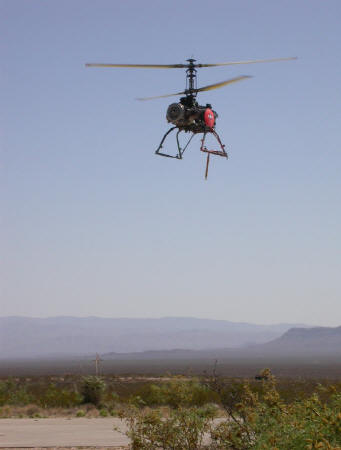 Well,
we flew them, and mechanically they worked great. The weak point was the
electronics linking the craft to its shipboard pilot. If this link was
broken, the helicopter would go into a no wind hover until it ran out of
fuel and crashed. In a four month period during the new policy we lost three
birds, two to the no wind hover and one that just went out of sight over the
horizon in a straight line on its own. There was an automatic float that was
supposed to allow recovery of a crashed aircraft. Of the three crashes, we
only found one float, and there was nothing attached to it but a frayed
line. I was not the DASH officer, but he was in my department. I was the one
who had to fill out all the "accident report" forms. It was the same battery
of paper work as for any other aircraft, DASH with a radio glitch or F4 down
in the Tonkin Gulf, same forms. Not long after our third loss, the squadron
went back to a low level of flight ops. My opinion is that the state of
electronics art at the time was a few decades short of being ready for DASH. Well,
we flew them, and mechanically they worked great. The weak point was the
electronics linking the craft to its shipboard pilot. If this link was
broken, the helicopter would go into a no wind hover until it ran out of
fuel and crashed. In a four month period during the new policy we lost three
birds, two to the no wind hover and one that just went out of sight over the
horizon in a straight line on its own. There was an automatic float that was
supposed to allow recovery of a crashed aircraft. Of the three crashes, we
only found one float, and there was nothing attached to it but a frayed
line. I was not the DASH officer, but he was in my department. I was the one
who had to fill out all the "accident report" forms. It was the same battery
of paper work as for any other aircraft, DASH with a radio glitch or F4 down
in the Tonkin Gulf, same forms. Not long after our third loss, the squadron
went back to a low level of flight ops. My opinion is that the state of
electronics art at the time was a few decades short of being ready for DASH.
A side note is that after leaving active service, I worked for the Armament
Department of General Electric in Burlington, Vermont. This business was
later merged into Martin Marietta then Lockheed Martin and then sold to
General Dynamics. We worked on a series of short range air defense systems
including the air defense variant of the Marine Corps Light Armored Vehicle
(LAV) family. When it came time for a big test of system capability against
helicopters, the targets were QH-50 drones. We downed a few more, but this
time it was intentional. Also, I did not have to do any extra paper work. A
sad end for a great little flying machine.
Bill Brown
Cdr. USNR - Retired
May 28, 2007, Memorial Day
|
|

|
My name is Virg Erwin and I was the Dash Deck Officer aboard the USS FRED T.
BERRY (DD/DDE-858) from '66-'67. We installed a scrapped P2V nose cone
over the DASH control console which really helped fight off the cold wind
during winter ops in the North Atlantic. It also helped that I didn't tell
the Skipper about this unauthorized modification until after the
installation was complete. He hated the DASH weapon system (frequent
crashes) but when he saw this Plexiglas dome, he just laughed and thought
the innovation was not such a bad idea.
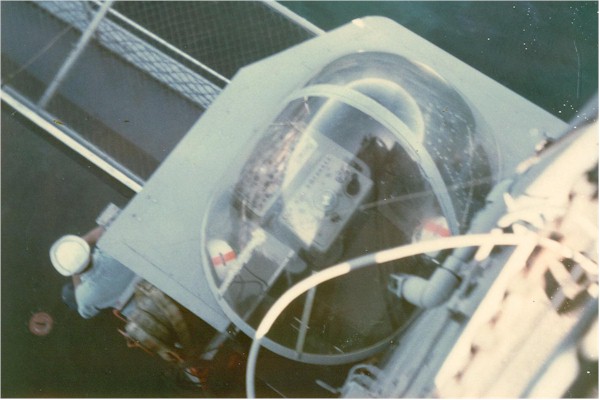
|
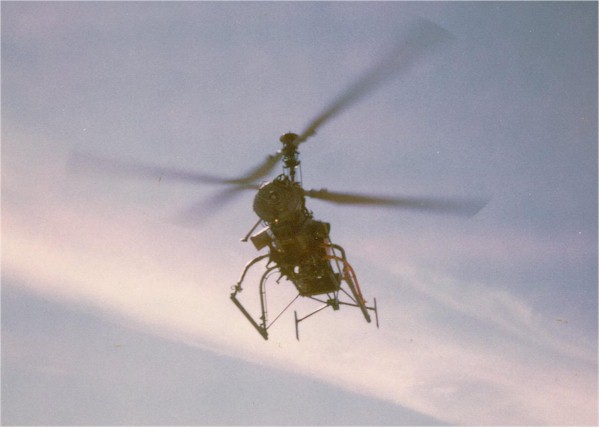
What a thrill to
launch this bird off our helicopter deck, bring her to a hover and then when
clear of the ship, transfer control to CIC. Directional control was a
“stick” in my right hand, just like the one in a manned helicopter and a
small thumb wheel on the left for altitude. That’s all that was needed,
piece of cake.
|
CIC, with similar controls would then direct the drone
toward a submarine contact and drop a homing torpedo. In all our ASW
exercises, we had 100% success.
These remotely controlled helicopters were incredibly responsive and I could
make them do anything I wanted. But there was one other problem that began
to surface throughout the Fleet. One of the stabilizing gyros had a tendency
to fail without warning. The consequences were dramatic.
There is a great Naval Aviator, Admiral Dan V. Gallery. He’s written some
very funny books such as “Clear the Decks”, comical stories about Naval
Aviation accidents. One story was of an inexperienced pilot at the controls
of a multi engine transport getting spoofed when seeing four planes showing
off in an inverted formation while between two cloud layers. Without
reference to the ground, the inexperienced pilot wondered who was right side
up.
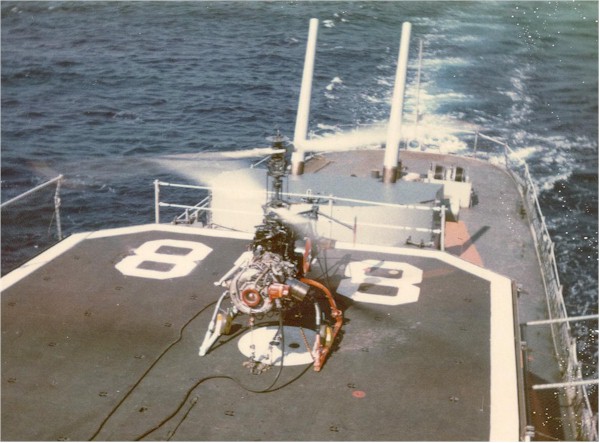
Admiral Gallery was a VIP guest onboard a Guided Missile Destroyer (DDG) in
the Mediterranean and he wanted to see this DASH do something. Our Destroyer
was selected to do the demo. I had read some of Adm. Gallery’s books and I
was ecstatic that this man might someday write about the Fred T. Berry and
what we were about to show him. As the DDG approached our stern to watch our
flight deck operation, we warmed up one of our DASH helicopters, went
through the normal checks and then brought her to a hover.
I noticed some abnormal responses from the drone. When I twisted the stick
for the helicopter to turn, nothing happened. This was not good. I notified
the bridge that I was bringing her back onboard and would then launch our
second helicopter.
Too late. This bird began extreme and uncontrolled motion
without any command inputs. Suddenly the drone made a steep bank and raced
across the flight deck, only missing the Berry by 20’. Then just as abruptly
it tried to reverse direction. The chaotic and uncoordinated force on the
counter rotating blades caused them to collided, splintering in an explosion
of metal shrapnel flying in every direction. The drone splashed into the
drink close aboard our starboard side. That none of these rotor blade
missiles penetrated human bodies was a miracle.
If you are going to have a dramatic accident at sea, it would be preferable
not to have a famous Admiral taking notes.
Unfortunately this was not the only accident. The second accident three
months later was nearly an identical episode. Other destroyers were having
similar experiences. It soon became clear that one of the onboard gyros were
failing with far too much frequency. Within five years the DASH program was
cancelled.
Virg Erwin,
USNR-retired
March 17, 2011 |
|

|
Dear DASH Historian –
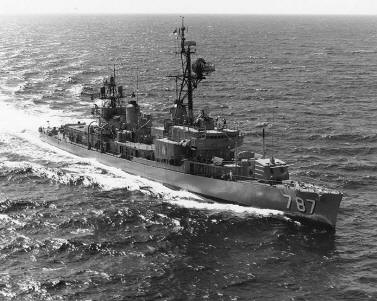 For years, I often told the
story of how I saved a million dollar DASH helicopter from dumping into the
Pacific Ocean. For years, I often told the
story of how I saved a million dollar DASH helicopter from dumping into the
Pacific Ocean.
I was an Electronic Technician serving aboard the USS James E. Kyes
(DD-787), http://ussjek.org, from the years
1966-1972.
The DASH Transmitter was always near the rear of the ET shack, however the
ET’s were not responsible for maintenance.
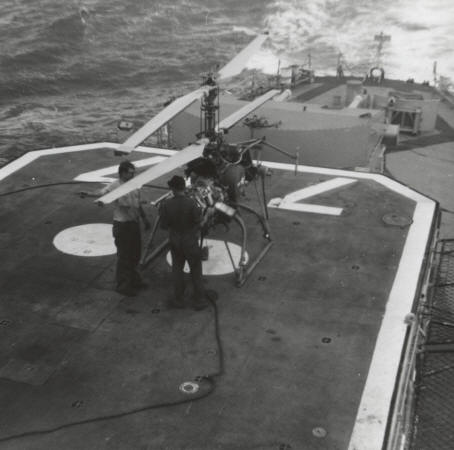 One day, my division officer
came running down to the ET shack to tell me that the DASH transmitter had
stopped communicating with the helicopter, that there was only 5 minutes of
fuel remaining, and asked if there was anything I could do to help. He
claimed that the DASH was designed to hover if it ever lost communication
with the ship and that it was hovering a good distance from the ship. One day, my division officer
came running down to the ET shack to tell me that the DASH transmitter had
stopped communicating with the helicopter, that there was only 5 minutes of
fuel remaining, and asked if there was anything I could do to help. He
claimed that the DASH was designed to hover if it ever lost communication
with the ship and that it was hovering a good distance from the ship.
I ran over to the DASH transmitter to see what I could do. I noticed that
the meter that showed “Plate Current” was sitting at zero, which obviously
meant that the transmitter was not transmitting. There was only one thing
that I could think to do, so I hit the front of the unit as hard as I could
with a closed fist. Imagine my surprise when the plate current meter
suddenly showed that it was now transmitting. I got on the sound powered
phone and told them to “try it now”. They said that they had regained
control. I told them that they had better hurry and get that thing back on
deck and I thought about Scotty from Star Trek when he said “I’m doing the
best I can Captain. I don’t know how long I can hold it!”
I just sat there watching the plate current meter when after about 2
minutes, it suddenly dropped to zero again. I immediately hit it again and
got the same response as the first time, full recovery. I was told later
that when the plate current dropped for the 2nd time, the DASH was just
coming over the side of the ship and took a sudden dive, causing a few
sailors to hit the deck. Apparently, the 2nd hit saved it from crashing into
the ship and possible badly injuring someone. The DASH helicopter, and
possibly a few sailors, were saved by a well placed fist.
Later, I opened the transmitter and found that the leads on the crystal for
the transmitting oscillator were not cleaned and that the routine PMS had
not been accomplished. As the leading ET aboard the Kyes, I used this
incident to prove to my ET’s how important it is to perform planned
maintenance.
Roger Donnay
Secretary, USS James E. Kyes Association
November 14, 2011
|
|

|
.jpg) Here's
a summary of my own DASH experience, starting with the training program at
San Clemente— Here's
a summary of my own DASH experience, starting with the training program at
San Clemente—
It's only fair to note that I'd been in the Navy manned flight training
program for a year before reporting to DASH training—a physical problem that
meant broken back if I had to eject. I finished DASH training number one in
class academically and number one in actual flight of DASH vehicle. I
reported to a ship in Hawaiian waters whose previous DASH controller was no
longer in area . . . nor were any other DASH controllers in area. My skipper
told me I could take the birds up without trained assistance if I felt
confident. Launching and flying—no big deal. The question would be landing
on a pitching deck. We picked a day with smooth seas and launched. Never had
a problem from that day forward, and I flew in some pretty heavy seas.
Lost two birds over my 80+ hours of flying—neither my fault or the fault of
the birds. After loosing the first bird (a Charlie), the tender in Pearl
discovered a cracked mother board in the flight deck controller—one circuit
in particular could be intermittent. Outside shipboard maintenance level.
The second bird went down on the way back from WESTPAC when a second ship in
squadron put a bird up on my assigned frequency after I was already
airborne. We were on different addresses but were using the same base
frequency. (The mistake had to do with frequency codes changing after
WESTPAC outchop, and the other guy not noting the code change.) My ET told
me he was picking up strong "jamming" signals on our frequency, that a
change altitude signal may have passed through the address filter. At any
rate, my bird, at 50 feet AGL and close aboard the ship, went into the drink
at the same time the other guy's bird came down from 1200 feet to whatever.
Great embarrassment on the other ship when all this came to light.
(COMCRUDESPAC reported an average loss rate of one bird per 40 flight hours
back in the day.)
My birds (Charlie and Delta) never behaved "erratically" or went wandering
over the horizon. I did learn later that the controller before me lost sight
of a bird (over the horizon), which was of course verboten. The ship went
running after it, caught up with it enough for controller to steer the bird
home, but when he got it close aboard he forgot burble thrown up by hanger
and managed to crash into hanger's top structure. Luckily, no injuries—and
this on dependents cruise day.
It was my idea (confidential at the time) to use the DASH to deploy foil
packages using simple containers (5-inch powder canisters) mounted to
torpedo release points. Rotor wash would deploy strips of foil to "foil"
enemy radar. Too, I figured we could suspend/trail various length ropes
twisted with radar reflecting foils. The idea was forwarded from the ship
but we never heard about it again. (Not even a thanks.)%20copy.jpg)
Back in Pearl, where no controller had ever passed a
COMCRUDESPAC-administered DASH inspection, I and the squadron tech-reps were
warned heads would roll if this inspection wasn't passed successfully. The
tech reps and tender personnel got my pubs and parts inventories up to 100%
and my guys and I pulled off the maintenance and operations bits. We almost
got a perfect score (98 or 99%, if I recall), but only after suffering the
skipper's and commodore's constant nagging complaints regarding dire
warnings from tech reps that we aboard Nicholas wouldn't/couldn't make the
grade.
I thought the DASH system was a great system, with lots of potential in
surveillance and radar jamming. I could understand that no pilot wanted to
be extracted from a crash site under a remotely controlled bird like our
noisy little guy. Never did understand "surveillance" from something as
noisy as the DASH, but what do I know.
John Bailey,
DASH Controller 1967-69
USS NICHOLAS (DD-449) : I reported aboard Nicholas
late 1967 and served through Jan 1969. I made Lt(jg) Dec 67 weekend; ship
was in Hilo, Hawaii. I did one WESTPAC while on Nicholas then finished
fourth year of obligated service in Saigon running Navy's language school.
That was the year Senator Kerry was Swift-boating the Delta and Admiral
Zumwalt was prepping for the CNO job
Note: John was the Controller of QH-50C, DS-1284,
which is now on display on the USS JOSEPH P. KENNEDY JR. (DD-850)
ship-museum. Go see it!
Submitted: December 5, 2011
|
|

|
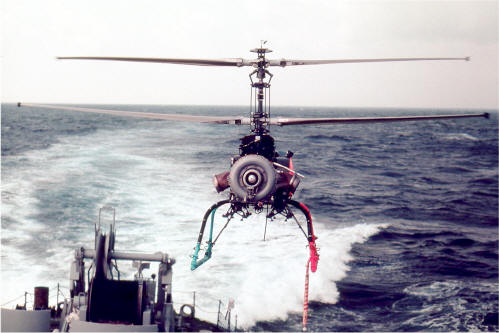
Good Afternoon,
As the original DASH Flight Deck Controller on the USS EVERSOLE DD-789, I
was amazed to find your website and the detail that it contains. Well Done
or "Bravo Zulu".
I also was OIC in OS-60 Phase II for OPTEVFOR. I was based in Key West and
the LEARY was the DASH Ship. We flew a QH-50D to 25 miles from the LEARY,
conducted simulated attacks using the NC-2 plotter, down to 250 feet with a
CEP of less than 20 feet. All of this was done at AUTEC.
DASH had a much greater likelihood to be correctly used in the Pacific Fleet
than in the Atlantic Fleet because of a joint COMNAVAIRPAC/COMCRUDESPAC
instruction that required DASH to be considered and maintained as an
aircraft.
EVERSOLE was part of ASW Group will I was on board. It took some time and
lots of meetings to get the ASW Helo and Fixed wing pilots to utilize DASH
as a weapon delivery system. On several occasions HS or VS aircraft would
hold or mark a contact and EVERSOLE DASH would deliver the successful
attack. The SSN never heard DASH or even knew one had been launched. Too
many senior Navy Officers where under the impression (false) that the launch
ship needed contact for a successful attack. EVERSOLE kept preaching that
the launch ship really didn't care who or how a target was located. All that
CIC needed was a location to place on the NC-2 and the weapon could be
delivered, up 25 miles at altitude of greater than 250 feet.
Alfred Maybach Jr,
LCDR, USN Ret.
Submitted: January 27, 2012
|
|

|
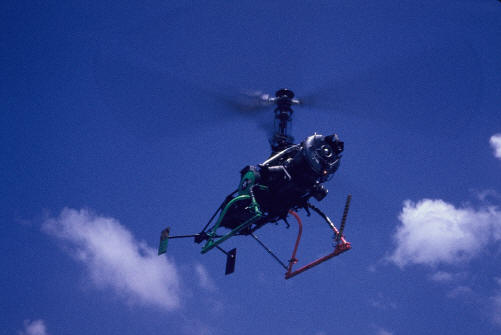 I
had written several times before about the DASH weapons system. I was aboard
the USS Norris and was sent to DASH school in Virginia in 1965. I was
astonished when I read my orders after finishing ADJ "A" school in Memphis
to find out that I was going to a Destroyer. I took my orders over to the
teacher and asked him "isn't DD a Destroyer" and he then filled me in with
what was going on. I
had written several times before about the DASH weapons system. I was aboard
the USS Norris and was sent to DASH school in Virginia in 1965. I was
astonished when I read my orders after finishing ADJ "A" school in Memphis
to find out that I was going to a Destroyer. I took my orders over to the
teacher and asked him "isn't DD a Destroyer" and he then filled me in with
what was going on.
I couldn't have received better orders. Most guys in DASH Division I am sure
think of their duties as a DASH mechanic, not so here. When I worked I spent
my time in the hanger but when I was off duty I stood my watches on the
bridge. When they took me into the XO's office I told them that being a jet
engine mechanic I should stand my watches in the hanger deck, not so, they
said your standing your watches on the bridge. I was fortunate, an eighteen
year old standing at the helm and steering the ship was a real thrill, and I
became one of the better helmsman aboard the Norris, I knew this because
there were times when I was requested on the bridge when we were doing ASW
operations. I was fortunate in that being on the bridge I was able to see
many things that no one else was able to see. I watched Polaris missiles
break the water when we were assigned missile control ship in Cape Kennedy.
I watched shells burst around villas in Viet Nam, standing there in my
t-shirt and shorts with my binoculars while on lookout.
Now to get back to the purpose of this letter.
The helicopters aboard Norris were DS 1230 and DS 1242. I imagine they
eventually became targets for some gunnery exercise.
I live in the St. Louis area and we have a super museum here called the
"National Transport Museum". I remember years ago, probably mid eighties to
mid nineties I visited that museum and saw a DASH helicopter on display. It
had no tail and I just looked at it and wondered what in the Hell it was. I
didn't know the tails had later been removed because they were virtually
useless. A few years ago I went to that museum and inquired about being on
the restoration crew, at that time I found out that they were going to
auction off a part of their collection and always wondered if the DASH was
auctioned off. About two years ago I went to the museum and talked to one of
the curators and he told me that they still had the helicopter but it was
stored in a warehouse and it was on a rotating display basis. I don't know
if or when they will display it but they implied that they had no intention
of letting it go. I think they have an extra set of rotors also. I asked if
I could go to the warehouse sometime and get some pictures for Gyrodyne and
get the numbers off the helicopter and they said they would call me sometime
when they were going to the warehouse. That call never came.
Thanks,
Joe Hettel
Submitted: Friday, April 20, 2012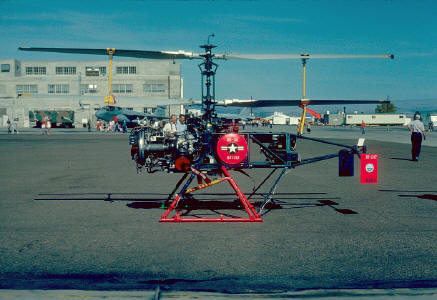
For Joe, we have the following data on His QH-50's:
DS-1230 survived DASH and was transferred to the US Naval Air Weapon
Center (NAWC) China Lake (Like DS-1212 shown left in 1984)......and
reported to be missing its blades on 14-Feb-1977 on an internal NAVY memo.
By 1997, prior to the close down of the NAWC QH-50 program, DS-1230 was no
longer on the NAWC master inventory sheet and is assumed to have been lost
during missile testing. No other data is available.
For DS-1242, she also survived DASH, and after a short stay at DMAFB
in storage, was later reported as part of NAWC China Lake Inventory, without
blades, by Joe E. Kitchens in his report of Feb. 14, 1977. Again, by 1997,
prior to the close down of the NAWC QH-50 program, DS-1242 was no longer on
the NAWC master inventory sheet of 1997 and is assumed to have been lost
during missile testing. No other data is available.
|
|

|
| |
|
|

|
|
|

|
Were working on more! Please be patient!
If you have a DASH memory you'd like to share......please
submit it to the following address (not a hyper link due to SPAM):
Gyrodyne_History@Yahoo.com

       

|
